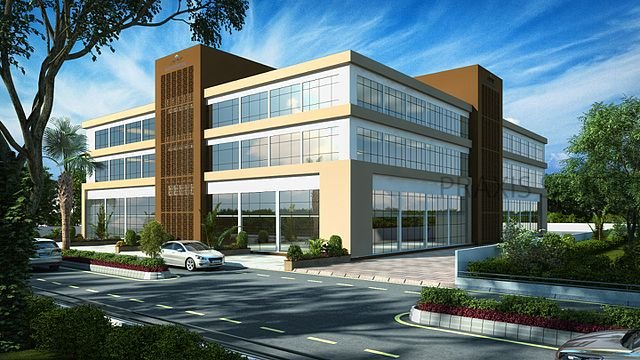Introduction
Architectural drawings are, naturally, a fundamental part of any building project. They show how every inch of the construction will come together through floor plans, cross sections, elevations and others. However, to the untrained eye, it’s very difficult to get a feel for the final product through 2D drawings or even basic 3D models without any realistic touches. And that’s where rendering comes in to bring the whole project to life.
What is rendering?
Depending on the type of design, rendering can take on a slightly different meaning. In terms of 3D design, architectural design software is used to add the finishing touches that give an image its photorealistic feel. To achieve this final look, designers are able to manipulate various elements of their models.
To bring everything out from the page and into reality, there are key areas to consider. Many small details can affect the final result and each one requires care and attention.
Texture & colour
Faces that represent walls and other objects in a 3D model are plain surfaces that have no connection to the real world. In a natural state, everything has a certain look and feel with which our brains are able to interact. So before worrying about any other aspect, textures and colours need to be applied where necessary.
Light & shadows
Any object, in a physical form, receives light from a number of sources at various times of the day. And 3D designs must stay true to these natural laws and keep the scenario as believable as possible. Using rendering software, the position of the sun can be set to represent a specific time during the day. Equally, artificial sources of light can be located at different points. As a result, shadows can be cast in all the right areas of a design and help feed the imagination.
Other atmospheric elements
Buildings aren’t bathed in sunlight at all times of the year. As such, there are many other elements that a designer might want to consider to further showcase how objects seem during different seasons etc. Clouds, rain, mist, waves, falling leaves and strong winds can all be represented in one way or another.
Common purposes of architectural rendering
As we’ve seen, architectural rendering sets the scene for a build and makes everything feel as lifelike as possible. But all of this extra effort isn’t expended simply to make a designer’s portfolio look more attractive—although that is a huge plus.
One of the main purposes of going to great lengths to create photorealistic images is to showcase the finished product before any construction takes place. And this is important for attracting customers and also when working with a client once they have come on board.
Attracting clients
Anyone looking to invest their time and money into a new build project will want to see exactly what they are getting for their money. Creating a realistic scene allows them to visualise the concept and delivers a far more immersive marketing experience.
Working with clients
Clients and designers may have very different views about how a finished construction will look. And when things don’t turn out how the client expected, there can be costly delays. Using the rendering techniques available, designs can be adjusted according to the client’s needs before any physical construction takes place.
Reasons to invest in a good rendering software
Architectural design software is a tool like any other. If you don’t invest in quality tools, then you can’t expect to see fantastic results. These tools at your disposal will make all the difference between getting the final vision as perfect as possible or leaving it to the imagination. And the latter will, inevitably, lead to problems further down the line.
There are myriad design packages available to choose from and they all offer various capabilities. It isn’t always necessary to go for the most expensive suite of tools on the market. And many parts of a program may be surplus to your requirements. You could end up paying for things you just don’t need, so it is important to take time to assess your options.
Light versions of a full design package are sometimes available to purchase. And it’s also feasible to source a free trial of a complete program too. Without making a huge financial commitment, you can try out a broad range of options within a program to see if it fits your needs.
Summary
Digital rendering is no longer seen as just a flash way to showcase your skills. It is now as important as any other part of the design process. And without it, your models will struggle to keep up with the competition. Take time to consider exactly how a building will look, feel and fit with its natural surroundings and get this point across to clients and potential clients in the most detailed way possible.
















